TWO-STROKE TUESDAY | 80 HORSEPOWER SMOKER ENGINES
In the action-packed thriller “Top Gun,” based on a brash Navy pilot trying to prove himself, the main character Maverick (played by Tom Cruise) poses a statement that all adrenaline junkies can relate to. Cruise boldly proclaims, “I feel the need…the need for speed!” And so it goes with all gearheads who relish the thought of going fast. That sensation wasn’t lost on John Garde, the 63-year-old dirt track kart racer from Connecticut.
At one time ranked fifth in the highly competitive Unlimited All-Stars series, Garde is still taking chances in a never-ending search for glory. However, unlike the one-track-minded Maverick, John has enjoyed the many stops along the way. Garde has lost track of all the races that he has won through the years, but he still remembers the first time he worked on a two-stroke engine at 14 years old.
Age isn’t the only indicator that John Garde isn’t exactly your garden variety kart racer. He, along with his brother and a friend, masterminded their own 250cc two-stroke kart engine. Crafted out of billet cases, mated with a production top-end, fit with a specialized Wiseco piston and tuned to the Moon, Garde’s creation pumps out more than 80 horsepower.
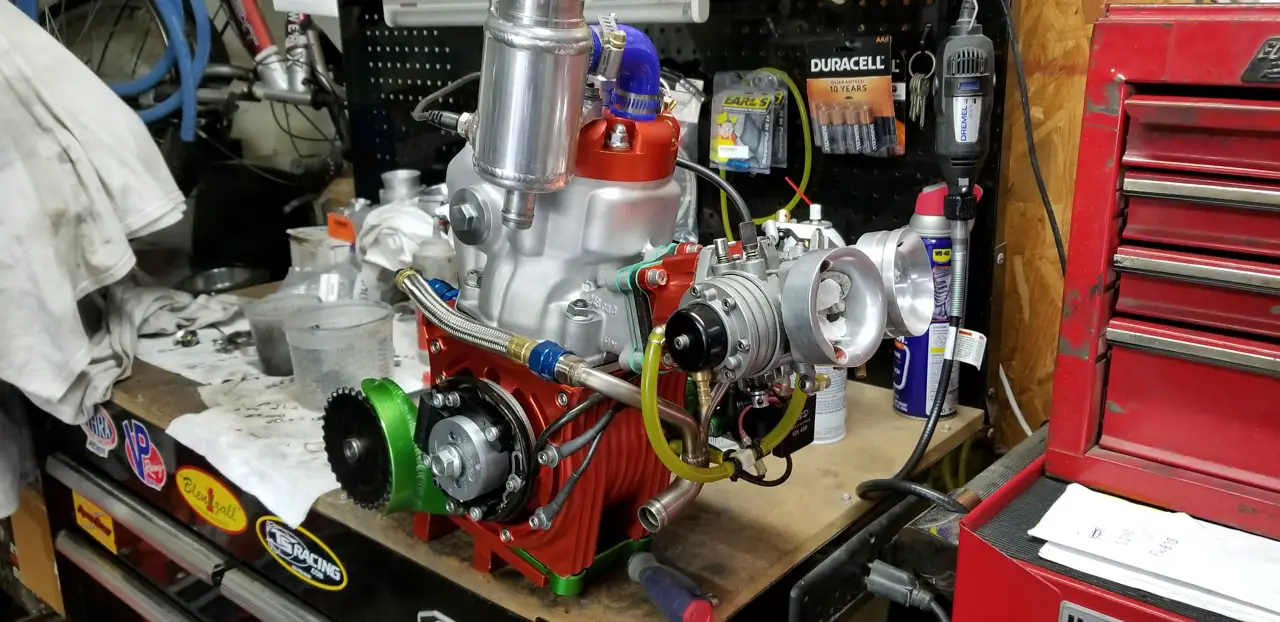 This is no ordinary 250 two-stroke engine. Fitted with billet cases and custom components, this is a work of performance art.
This is no ordinary 250 two-stroke engine. Fitted with billet cases and custom components, this is a work of performance art.
Meet John Garde, the world’s fastest 63-year-old kart racer.
John, how many years have you spent behind the wheel of a kart? I actually got out of car racing and switched to karts, which I have been racing since 1976. In reality, I started messing around with karts when I was four years old. That was back in 1958! My dad built me a dragster kart that had pedals. I have been hooked ever since. I always liked motors and became fascinated by two-stroke engines. I also like four-strokes, but I’m really into the two-strokes.
Speaking of four-strokes, looking at the results sheets of the Unlimited All-Stars, it seems that four-strokes are generally more popular than two-stroke engines. Is that true? The majority of kart engines are Honda CRF450R four-strokes. There are also quite a few Jawas and GMs. Those motors come out of Speedway motorcycles, which are really big in Europe. That type of motor is easily attainable, and it goes fast without much modification. Regarding 450cc four-strokes, the rulebook allows up to 500cc displacement. Most guys punch their CRF450Rs out to 488cc. Those engines are highly modified and push out 80 horsepower.
How does a two-stroke compare to a four-stroke? The two-stroke is a little bit more work. It has been a long learning curve with these two-strokes, but I like the challenge. I actually just had several custom pistons made by Wiseco. I used some of my own ideas and went through a few design changes. So far, the pistons are working really well. Believe it or not, two-strokes usually win the majority of the races, even when 250cc two-strokes are up against the 500cc four-strokes. I do think the two-stroke is a little harder to drive, but they can hang on a competitive level.
 John runs custom Wiseco pistons in his 2-stroke kart engine builds.
John runs custom Wiseco pistons in his 2-stroke kart engine builds.
Can you please explain the rules behind Unlimited All-Star dirt track kart racing? The whole intent was to provide a class for true open karts with very few rules. There are obviously rules regarding safety, but the class was built for guys who wanted to run unlimited displacement motors. The motors are at different weights for the various sizes, but you can have someone running anywhere from a 100cc two-stroke up to a 500cc four-stroke. Somewhat surprising is that it works out pretty evenly. The Unlimited All-Stars is an interesting class. I have been running karts forever, and I always ran the Open classes. The Stock classes didn’t appeal to me.
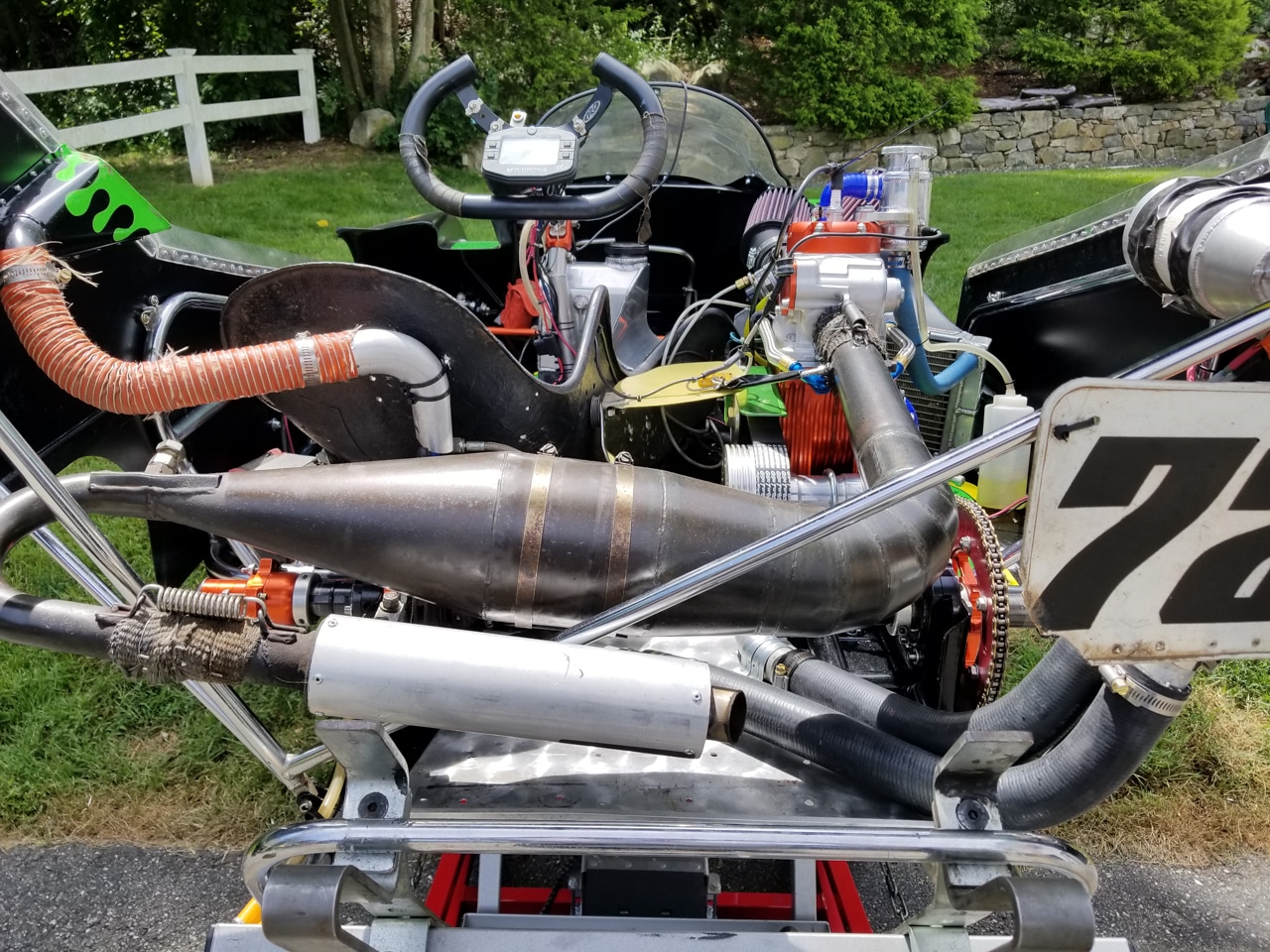 Unlimited All-Stars keeps true unlimited class kart racing alive. Racers have a lot of freedom to run what they want, which is what has always appealed to John.
Unlimited All-Stars keeps true unlimited class kart racing alive. Racers have a lot of freedom to run what they want, which is what has always appealed to John.
We have never heard of your kart engine before. What exactly is a PK 250? The PK 250 was an idea that a friend of mine, Rory West, came up with. He owns a kart shop, called Prokart Racing Karts, where I live in Connecticut. He always wanted to build a crazy two-stroke. About six years ago, the Unlimited All-Star rules were opened up to allow motorcycle engines, whereas before you had to a run a kart-specific engine. Most of those were two-stroke Italian motors. Rory decided that he was going to make his own engine. He’s a very good fabricator. Rory came up with a design for billet cases. The reason behind that was because most two-stroke kart racers don’t use transmissions. Rory built billet cases that would work with a Honda CR250 cylinder. He intended to sell that motor as a package. Rory made some design changes, and we got to talking about it. I told him that I was on board. It has been a learning curve.
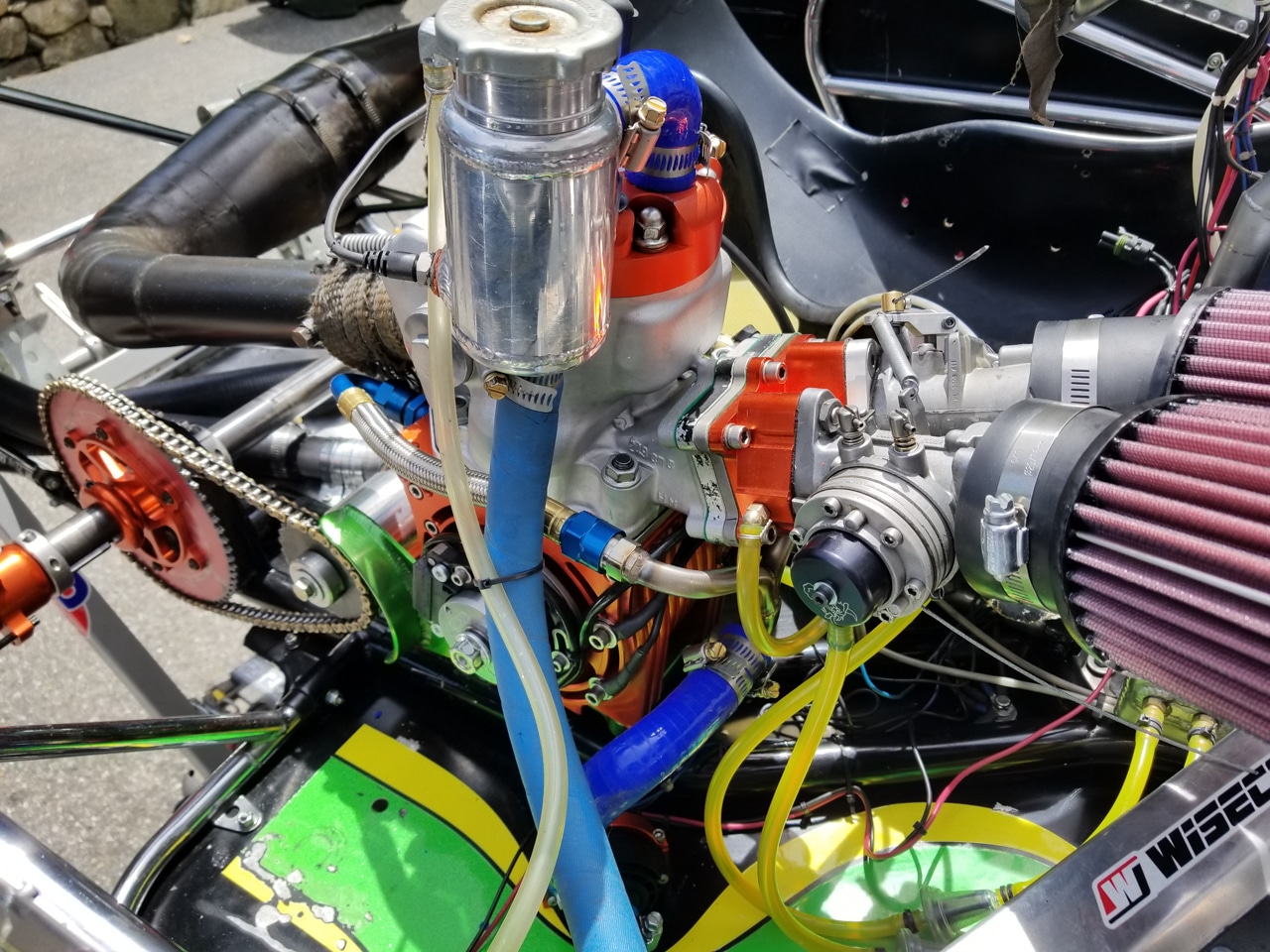 This is one of John’s PK 250s, which features custom billet cases by Rory West of Prokart Racing Karts and a Honda CR250 cylinder. The billet cases allowed for use in the karts, as they don’t utilize transmissions.
This is one of John’s PK 250s, which features custom billet cases by Rory West of Prokart Racing Karts and a Honda CR250 cylinder. The billet cases allowed for use in the karts, as they don’t utilize transmissions.
How does a kart engine setup differ from a motorcycle-specific configuration? A kart engine has to make really good power from about 5,500 rpm to 10,000 rpm. It has to have a very fat torque curve and smooth transition. I can’t have a light-switch powerband. You have to remember that I’m trying to get the power to the ground on tires that are only 11 inches in diameter. We’re able to pump out 80 horsepower on a machine that weighs 400 pounds, and that includes the driver’s weight. You’re talking about a pretty serious machine.
Has the billet engine case concept caught on? Yes. A few people are making billet bottom-ends that mate up with Yamaha or Honda top-ends. There are even guys who are building billet lower ends for the four-strokes, because they don’t want to run the transmissions. The racing structure has evolved into mostly motorcycle engines being used in the Unlimited All-Stars. There are still some guys that use older kart engines, where they’re running a twin-engine configuration. That setup is very fast. We were producing close to 50 horsepower out of a 130cc single cylinder on a kart engine. If you get two of those on the same machine, then you’re talking about pushing 100 horsepower. It’s crazy [laughter]. We had my 250cc two-stroke on a chassis dyno a few years ago. It was making 72 horsepower at the rear wheel. If you put in that 12- to 15-percent factor, it meant that my engine was producing over 80 horsepower.
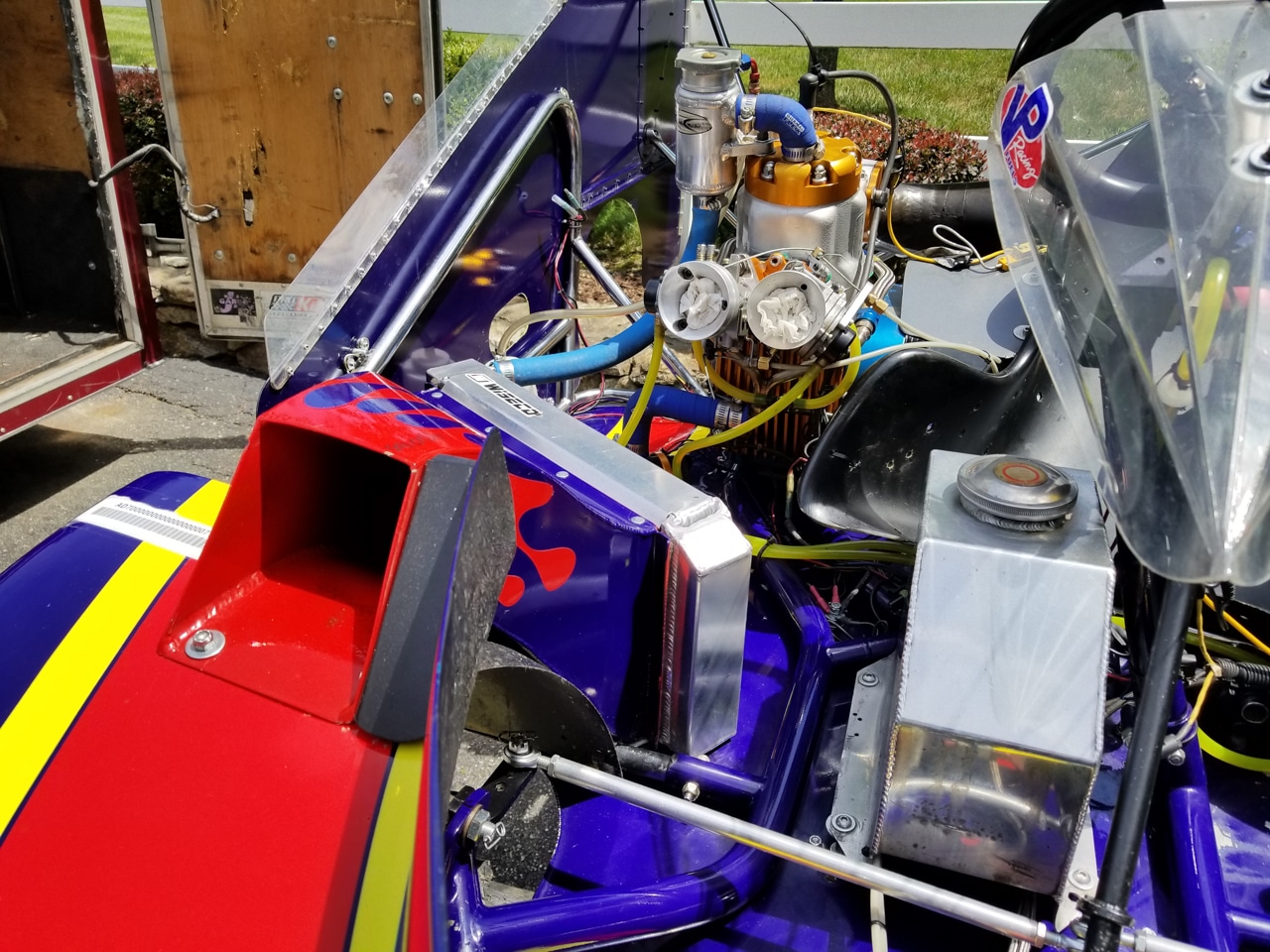 On the dyno, John’s 250cc kart made 72 HP to the wheels, translating to over 80 HP at the crank. Better hold on.
On the dyno, John’s 250cc kart made 72 HP to the wheels, translating to over 80 HP at the crank. Better hold on.
What torque numbers does your PK 250 two-stroke make? It’s right in the 35- to 38 foot-pounds area. Now I have a 275cc two-stroke put together. That’s the maximum size two-stroke displacement that you can run. The engine has been a struggle. We broke a lot of pistons with that, but then we tried different wrist pin offsets. It fixed the problem. My plan is to dial in the engine on the track. I have no idea how much power that engine will make. It would not be crazy to think that the engine will be pushing 90 horsepower. I’m anxious to find out.
How many laps do you get out of an engine before having to do a rebuild? We just ran three of the engines a couple of weeks ago. After pulling the cylinders off we noticed that the pistons looked brand new. The races are really short. A 20-lap race doesn’t take long at all. You have heat races and practices, so you’re logging 50-60 laps a night. I don’t think there’s a track that takes longer than 16 seconds to complete one lap. I can go quite some time before needing to do an engine overhaul.
What’s the story behind your kart chassis? Most of the chassis’ being used these days are manufactured around the Charlotte, North Carolina area. I run a chassis that’s made by Rory West here in Connecticut. He came up with a unique front-end design way back in the late 1980s. It was a heim joint design, where you could adjust the caster and camber. He took that a step farther. Rory used a jacket bolt through the spindle, allowing a racer to adjust his cross-weight in less than a minute. Conventional karts use washers, spacers and cams to change the chassis balance. Rory’s design fascinated me. I have stuck with his chassis ever since then. With that said, the big-track kart uses a basic chassis. My brother and I changed a whole lot of things on that chassis to accommodate for what we needed. The nose came from a 250cc super kart that we had to cut in all kinds of pieces to fit on an oval kart. The same goes with the body.
How important is chassis setup to success on the racetrack? The chassis is a big part of racing. There’s no suspension on a kart, but the chassis works as a big torsion bar. It still matters how the chassis is put together. Some handle better on hard-pack tracks, while others seem to excel on soft-dirt tracks. You have to account for all conditions. It really is a science. I play around with tenths of a percentage point when changing cross weight. Racing has evolved into a high-tech game. The only thing is that we don’t have shocks and springs like cars do. I don’t care how fast your motor is; if you can’t get around the corners, then you’re not going to win the race. Handling is so important. My brother always says, “There are four corners and only two straightaways. What do you think you should worry about?” He’s exactly right [laughter].
How much does your race kart cost? I can’t even imagine how much money I have spent on my race karts! With the work my brother put into, and the time I have invested in the motor, it would probably be about $25,000. There was a lot of time spent on research and development, and then there are the parts to think about. My karts aren’t cheap, that’s for sure.
How taxing is kart racing on the body, and at 63 years of age, how much longer are you going to race? It’s hard to do, regardless of age. People don’t think of kart racing as being a physical activity. There’s a lot of upper body strength that’s required, and you need to have good cardio conditioning. These 250cc two-strokes feel like someone is trying to rip your head off when you’re going down the straightaways, and then like someone is trying to pull you out of the kart when you get to the corners. I race against most guys who are young enough that they could be my kids. I have to be in shape to stay with these guys. I’m okay with that. I’ll keep doing it for as long as I feel I can win, and I also have fun.


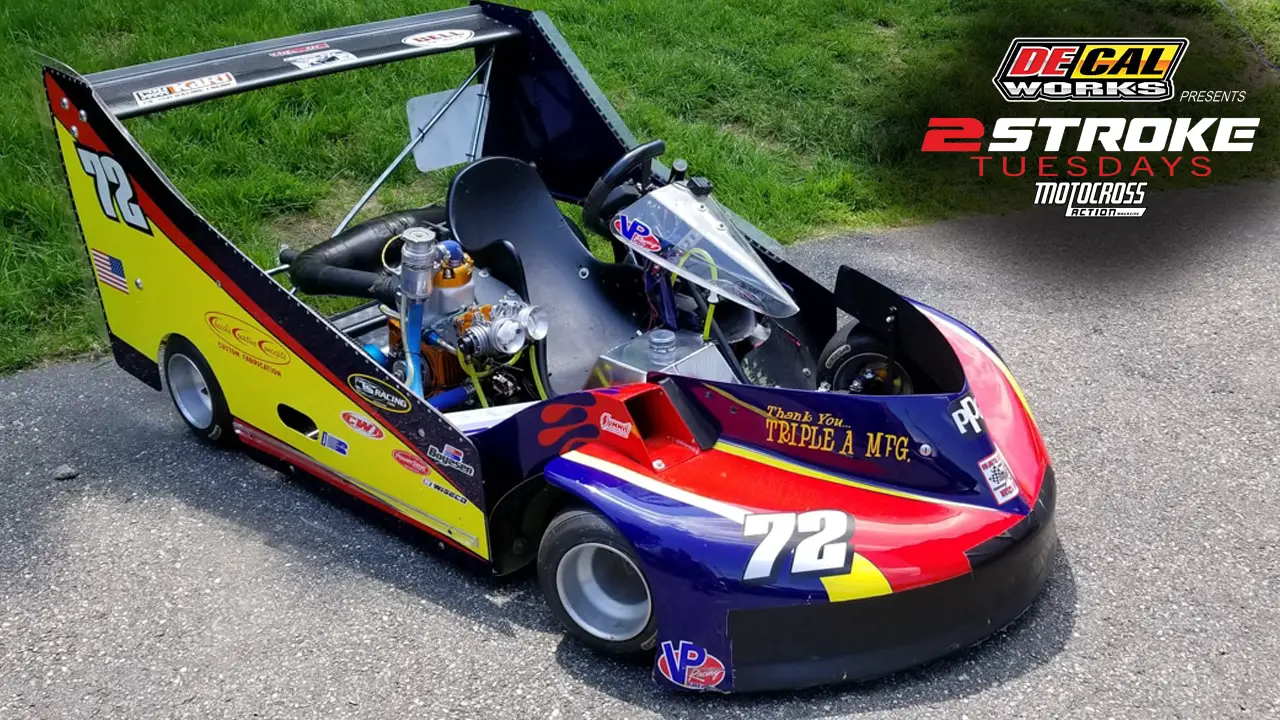



Comments are closed.